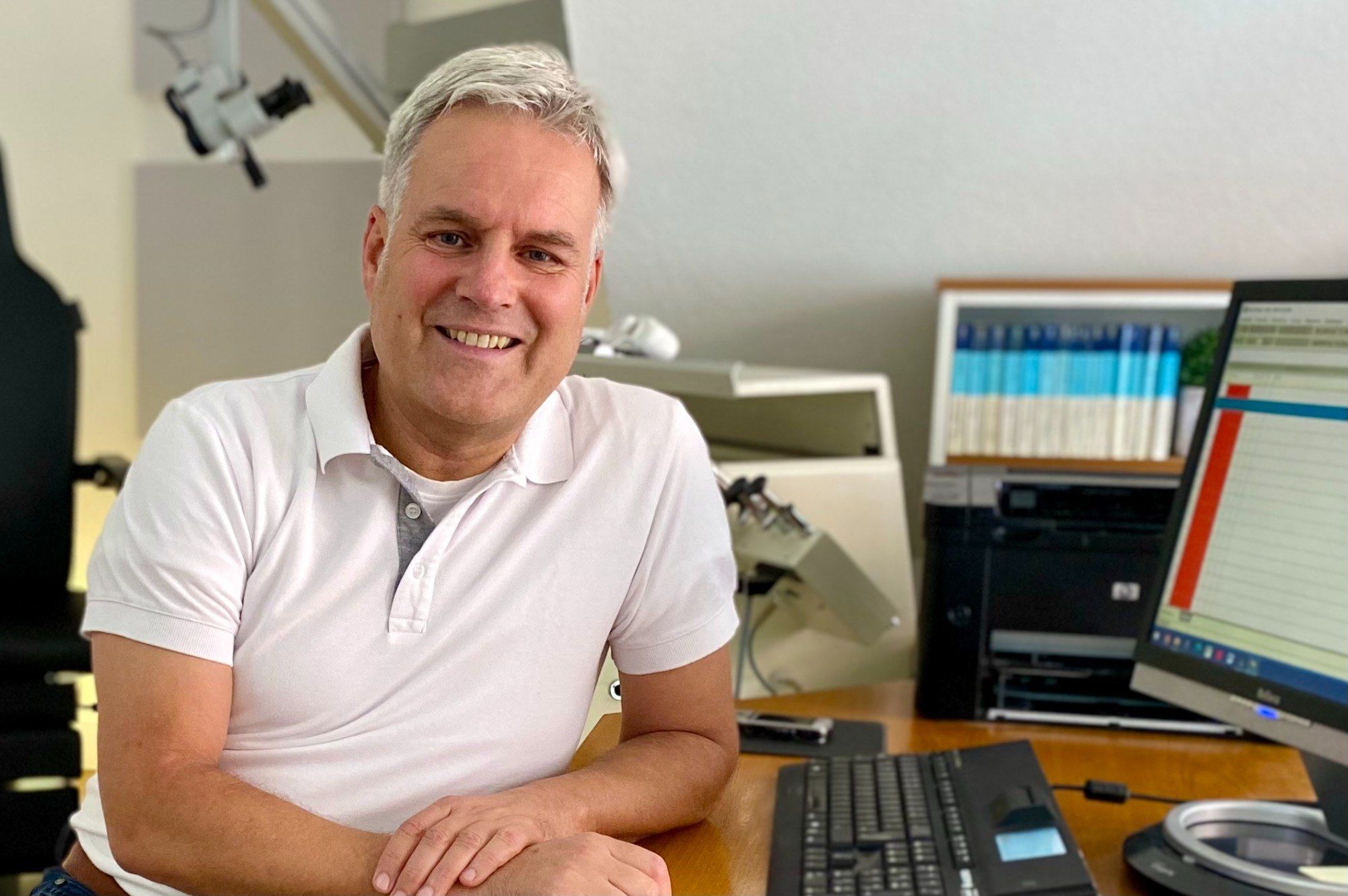Case study
Why doctors in Celle are now chatting

Interest in digital exchange has increased among physicians, but in the outpatient sector it often comes down to random contacts. A doctor from Celle establishes a regional network – at great expense.
The impulse came in Myanmar. And now facilitates the exchange between doctors in Lower Saxony: A few years ago, ENT doctor Joachim Draws volunteered on an ambulance ship in Southeast Asia – and was looking for ways to help his local colleagues after his return. In 2018, he chose messenger service Siilo, one of the earliest tech companies to focus on the healthcare industry.
This year, Draws began to systematically use the tool in his home country as well. In March, he launched the “Siilo-Netz-Celle” – and has so far already won over nearly 100 physicians, pharmacists and healthcare professionals from the Lower Saxony district, an hour’s drive northeast of Hanover.
In June alone, the users exchanged 4000 messages with each other. Most of the messages were about patients – for example, to inform a specialist in advance of a referral. But in subgroups, overarching topics are discussed: In June, for example, participants exchanged information about which participating pharmacies still had medications available that were out of stock at wholesalers. And pediatricians alerted each other when a young child in the county was diagnosed with a highly contagious disease.
The temporally asynchronous exchange via Messenger, including the sending of image files or voice messages, thus facilitates the exchange through the “small official channels,” says Draws. “Before, there was only the doctor’s letter or the phone call. One option had numerous limitations, and the other had many more.” Written communication was formalized and slow; by phone call, busy physicians often couldn’t reach each other.
Providers hope for new momentum
Numerous providers of specialized messaging services have been courting customers for years. They all promise a kind of WhatsApp with a seal of approval: medical staff should be able to use the services to exchange information about patients, the course of illnesses, or internal organization securely, in a manner compatible with data protection, and easily. The certification of the TI Messenger, which Gematik has been working on for some time, could provide new impulse for the topic – a launch was actually planned for the second quarter of 2023.siilo
At the heart of this is the Matrix communication protocol, which is intended, among other things, to enable the easy exchange of data between different messengers. Telekom announced this spring that it was developing its own service, as did Compugroup Medical (CGM) or Mediatixx. Awesome Technologies from Würzburg is working with IT service provider Arvato Systems on approval, as is Hamburg-based start-up Famedly.
Adesso from Dortmund has spun off its own start-up, MediOne. Doctolib launched its own messenger “Team” last year – and also acquired the Dutch company Siilo this spring.
Messaging in Healthcare: difficult path into everyday life
Larger organizations such as clinics or care facilities are always buying licenses as a package for their employees – making them the logical target group for providers. The situation is different in the outpatient sector, especially in cities and rural districts. In some regions of Germany, so-called physician networks have formed from general practitioners and specialists in private practice, who sometimes cooperate more, sometimes less closely.
In addition, there are casual contacts of physicians who are looking for new channels of communication. Draws has already exchanged Siilo messages with some of his physician friends in the past. But the example from Celle also shows that a lot of work is needed before these services really spread across the board. “Just because the federal government brings out the TI Messenger, colleagues will not change their decades-old communication practices,” Draws is convinced.
The ENT physician therefore relies on a direct approach: on free afternoons, he gets on his motorcycle, visits physicians in private practice in the widely ramified district with 180,000 inhabitants, reports on the application possibilities, convinces them of the regional and digital network. He has already reached about one-eighth of the physicians in private practice in the district. And he expects that word of the offer will gradually get around and the number of registrations will increase. “It’s a bit of a hassle to get the ball rolling,” Draws says, “but once colleagues realize it’s working, it quickly picks up steam.”
You can find the original article on the Handelsblatt website.